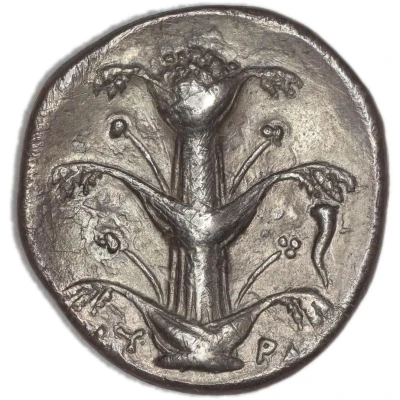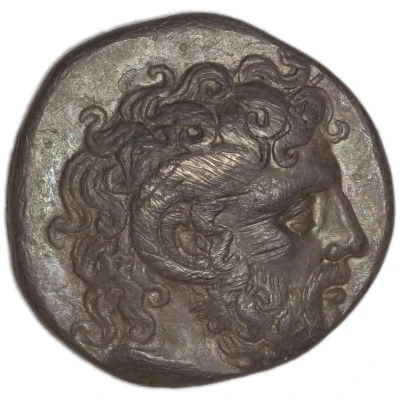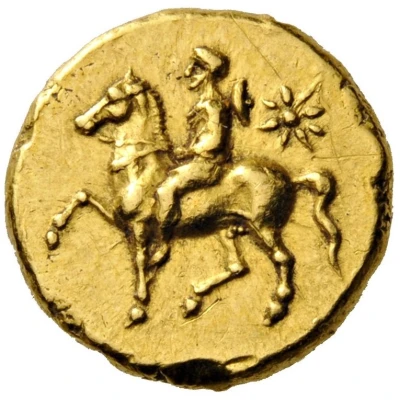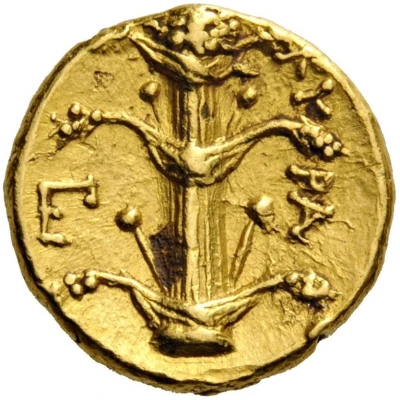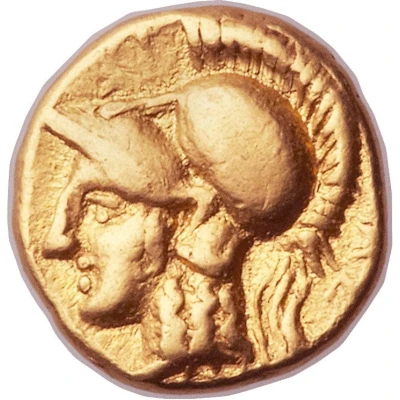
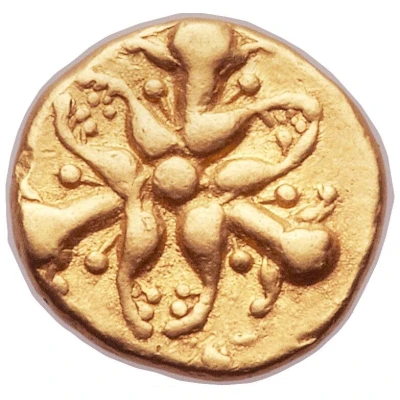

© Heritage Auctions
Triobol 330 BC - 310 BC
| Gold | 2.09 g | 10 mm |
| Issuer | Kyrene (Kyrenaica) |
|---|---|
| Type | Standard circulation coin |
| Years | 330 BC - 310 BC |
| Value | Gold Triobol (6) |
| Currency | Drachm |
| Composition | Gold |
| Weight | 2.09 g |
| Diameter | 10 mm |
| Shape | Round (irregular) |
| Technique | Hammered |
| Demonetized | Yes |
| Updated | 2024-10-10 |
| Numista | N#379608 |
|---|---|
| Rarity index | 100% |
Reverse
Triple silphium plant in form of triskeles.
Interesting fact
The Triobol coin was used as a form of currency in the ancient Greek city of Kyrene, which was located in present-day Libya. The coin features the image of a silphium plant, which was a highly valued medicinal herb in ancient times. The silphium plant was used to treat a variety of ailments, including indigestion and respiratory issues, and was considered so valuable that it was often used as a form of currency. The Triobol coin was one of the first coins to feature a plant as its main design, and it remains a unique and interesting example of ancient currency.
Price
| Date | Mintage | VG | F | VF | XF | AU | UNC |
|---|---|---|---|---|---|---|---|
| ND (330 BC - 310 BC) | - | - | - | - | - | - |
Values in the table are based on evaluations by sales realized on Internet platforms. They serve as an indication only for Triobol (330 BC - 310 BC) coin.
